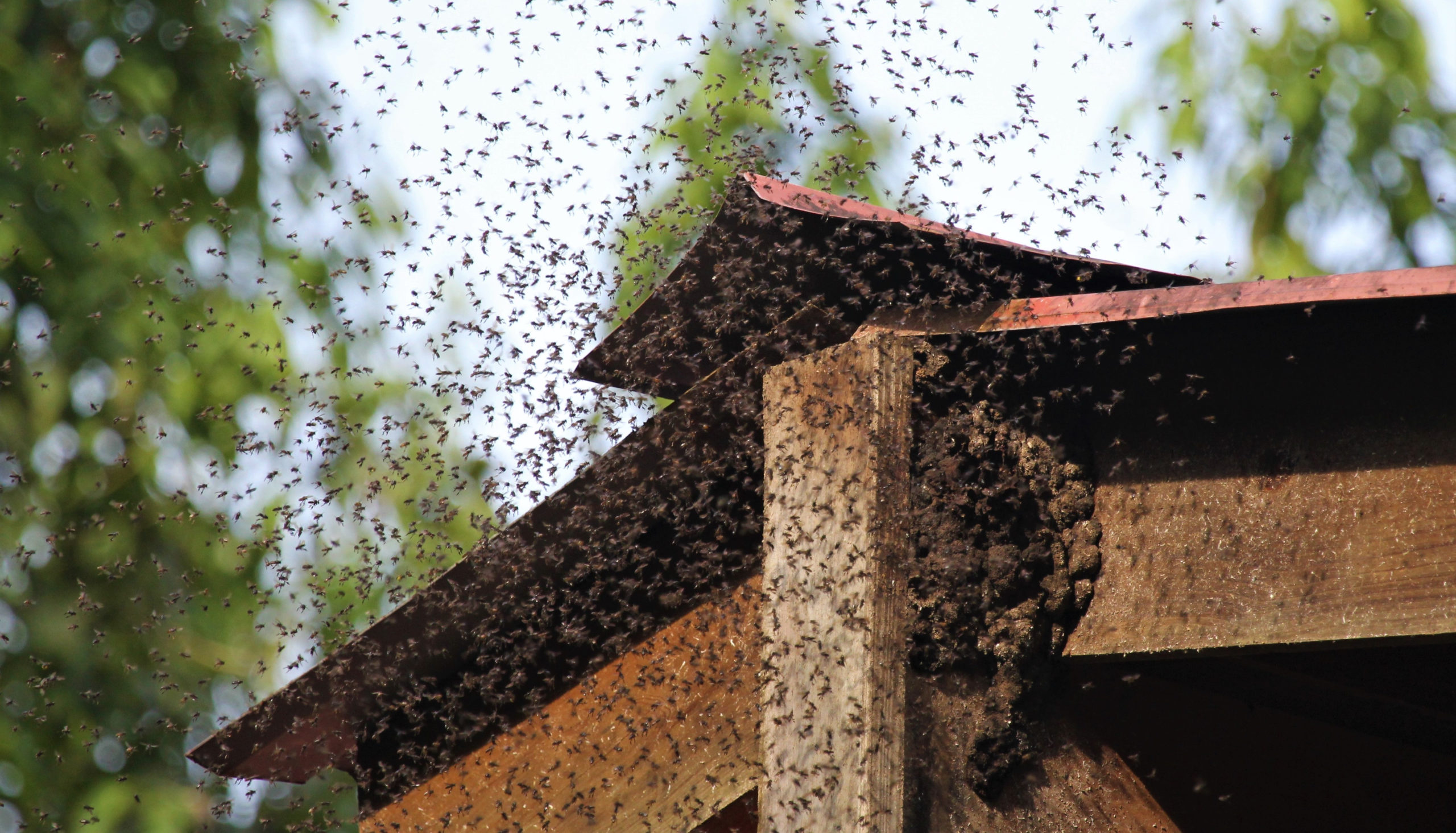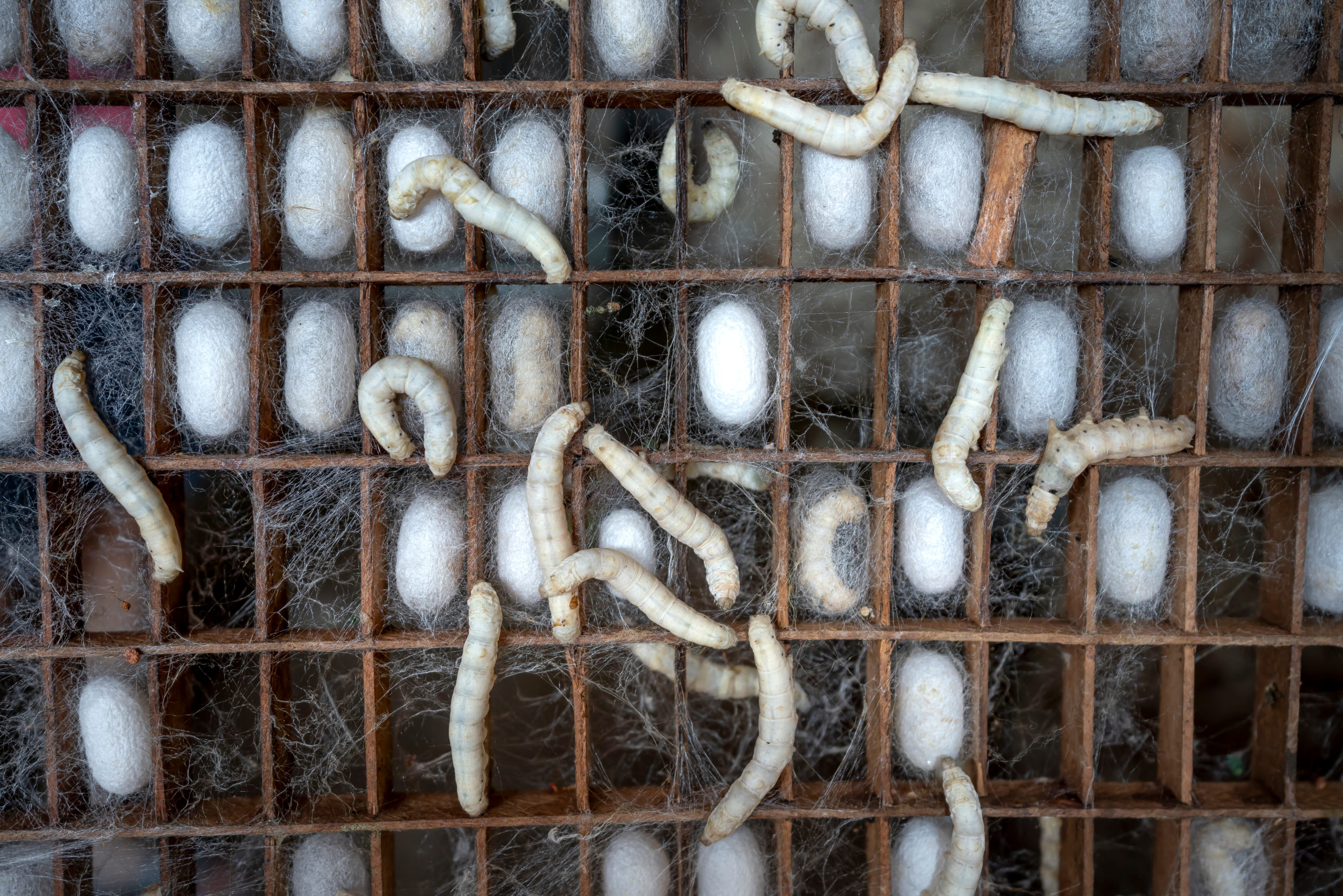Bad Bugs: An Analysis of 3 Ant-Man Insect Villains
Bad Bugs: An Analysis of 3 Ant-Man Insect Villains
Since spiders are arachnids, it’s safe to say that Ant-Man is one of the most, if not the most, popular insect-themed Marvel superhero. In a past blog, we discussed how his ant-themed superpowers actually do a good job of relating to the real life insects. He can even communicate with normal ants, thanks to his specialized helmet, and gets into trouble when villains also find this power interesting. This idea was explored in the 2020 Ant-Man comic series “World Hive” where Ant-Man finds himself unwillingly teamed up with Swarm (more on him in the future) to fight a trio of insect-themed villains serving their boss Macrothrax. This is a fun series that explores the powers of both Ant-Man and Stinger (his daughter), but we’re just going to focus on the logistics of the three insect evildoers today.
A Short Backstory

Personal photo of the last page in “Ant-Man: World Hive” Issue 1
We won’t summarize the whole comic series – you can always read them online if you’re intrigued – but it would do some good to give a general backstory for these three terrors. Basically, Swarm is a bee-themed villainous man who retained his consciousness while being covered in bees. He was instructed by Macrothrax, an even bigger villain who resembles a robot-insect with one eye, to construct a new ray tool to create the same hive minded effect in other insects, but this experiment turned sour very quick. The hornets, silkworms, and rhino beetles that were mutated came together in a humanoid form as expected, but they all retained the insect hive mind without any of the humanity that Swarm had. This meant they lacked empathy and understanding, resulting in them turning on Swarm for being a traitor and striving to create a purely insect-based world. The three villains speak in very limited terms, but they can use the insects making up their body compositions in unique ways to fight the people trying to stop their world domination. In the case of this series, that means multiple fights with Ant-Man, Stinger, and other heroes.
Now that we know these villains are completely insect-driven and lack the ability to think like a human, let’s dive into their powers and how they relate to the real-life (slightly less scary) insects.
Vespa – “The Specter of Hornets”

Vespa may not be the creepiest-looking of the bunch (that honor goes to Thread), but it is definitely the most realistic in terms of fear. Just imagine a human-shaped mass of hornets out for revenge, and that’s enough to give you nightmares for a week! Vespa is a humanoid mass of mutated wasps with one hive mind. It can maneuver the wasps to form weapons, like a sharp “knife” made of hornets, which prove to be quite dangerous against Ant-Man in the second issue in the series. It also has a pair of wings that are strong enough to carry the mass of hornets around while still retaining the human-shape. Like its counterparts, Vespa does not have an ounce of humanity and is motivated by its mission to kill Swarm for his underlying human nature. This means that we don’t get to know any of them as characters, but for the sake of them being terrifying lackeys to a bigger villain, it checks out in this storyline. Vespa met its end when Stinger used her helmet to communicate with the hornets and commanded them to disband, causing Vespa to gradually crumble as the hornets left.
The Real Deal: Out of the three villains here, Vespa’s abilities may be the most true-to-form with the real insects. Hornets, and wasps in general, live in a hive and work as a team for the good of the colony. They serve a queen and go out to gather food and materials to sustain their fellow hornets. So they definitely have a shared “mission” and work excellently as a team in that sense. A huge reason for that is their effective communication methods. Hornets use pheromones, like ants do, to leave specific messages for their specific hive. Pheromones are chemicals produced by a species that typically only members of the same species responds to; other species will ignore the messages that aren’t meant for them. Hornet pheromones are all detected through smell, none of which we can detect. The main reasons for communicating are alerting the others of danger, marking a food source, and notifying of the location of their eggs. This is why one hornet sting can quickly turn into a lot, since their stings release pheromones that tell their colony to attack the same enemy. It’s usually easy to avoid getting stung by staying far from their nest, which is an easier task than fighting a humanoid hornet-mass would be.
Thread – “Silkworm Ghoul”

Thread looks more like the imaginary monster under the bed than a traditional superhero villain, but that’s part of the fun! This mummy-lookalike can stretch its silkworm threads to attack or capture its enemies. The organic material can stretch to punch someone, which is made painful when it concentrates a lot of silkworms into its “fist” before landing the blow. Thread can also elongate its arms to catch people at a distance. Since its silky strands are sticky, it is difficult to escape once a hero is captured. As with its monstrous teammates, Thread has no empathy and is strictly a bunch of silkworms mashed together with the intent of completing the mission and fulfilling Macrothrax’s wish for an insect-ruled world. But Thread never gets the chance to see if this plan works, since Stinger once again ordered the silkworms to disperse immediately. Thread begs them to come back, but to no avail; he is disbanded like a mummy whose wrappings were prematurely unraveled without care.
The Real Deal: Silkworms are a different kind of insect that would not normally be associated with any kind of hero or villain, super or not. They are technically not even real insects, since the silkworm is the larva stage of the silkworm moth. It does not always survive in the wild like it used to, probably because it has evolved to be accustomed to habitats controlled by humans. This isn’t to say that silkworms can’t live outdoors. It is possible to find them in a tree or bush, their silky cocoon strands covering the leaves in a premature Halloween celebration. The cocoon is typically one long strand of silk, measuring to about one mile long when stretched out. No wonder silkworms are responsible for producing our silk! In this sense, Thread is pretty accurate. Real silkworms don’t have a hive mind or work together to form anything, but their silk is definitely sticky enough to make it a chore to remove. Silkworms may be an early stage of a flying insect, but it certainly serves its purpose in producing a useful material and annoying gardeners with the sticky substance.
Tusk – “Rhino Beetle Hulk”

This is definitely the strongest of the three villains – physically, not mentally. But this makes sense when you think about its nickname. Tusk is the muscle of the group, and he easily steps into his role by using the natural strength and weaponry of his insects. He is much more of a composite being than his teammates, as he actually looks like one creature (most of the time) rather than a bunch of bugs. Tusk is strongest when he uses the beetles all together, as he can trample or crush any normal-sized person in his way. But he can also control the beetles individually, which is how one was able to pierce Ant-Man while he ran away. Tusk even looks like a typical rhino beetle with his prolonged horns on the top of his head. He is tough to beat due to the natural durability of the rhino beetles, which is why Ant-Man had to enlarge one beetle in Tusk’s chest to have a chance at stopping him for even a few seconds. But Tusk continues to pursue the heroes until he expires when – you guessed it – Stinger tells the rhino beetles to disperse and they obey. Even with their impressive strength and scary horns, the rhino beetles are still no match for a superhero with insect-focused tech.
The Real Deal: The fact that rhino beetles are also referred to as “Hercules beetles” tells you all you need to know in terms of their real strength. Studies show that they can actually lift about 850 times their own weight! No wonder they are always impossibly strong in every animated depiction of the species. Rhino beetles are 6 inches long, making them one of the largest beetles in the world. With these stats in mind, Tusk’s size and abilities are very true to real life. Real rhino beetles even use their horns like Tusk did; they utilize the two huge horns to dig in the soil and fight other rhino beetles for territory or a mate. This is a great use for the built-in weapons of this armored beetle, both in real life and in the comics. While Tusk can speak in limited phrases, real rhino beetles unfortunately do not have the ability to talk. But they do make a strange squeaking sound by rubbing their wings and abdomen together. It’s normal in nature, but if a huge beast like Tusk were to merely squeak in the heat of battle, he would have been the laughing stock of the insect-villain world.
Pest Control Will Save the Day!
Thankfully, we don’t have to worry about any pests forming giant humanoid villains anytime soon! That would take quite a bit of pest control treatments to resolve. But even the normal pests are frustrating to deal with, never mind the fact that some of them inflict pain when we disturb their habitat in our yards. Our knowledgable technicians are equipped with the EPA-approved treatments that will solve all kinds of pest problems and leave you with a pest-free home. Contact us to learn more about our efficient pest control services and how we can prevent your yard from becoming the setting of the next insect-themed superhero adventure.
Citations
Foster, B. (2019, November 22). Life cycle of a silkworm. Sciencing. Available at https://sciencing.com/life-cycle-silkworm-5377409.html (Accessed on July 8, 2022)
Glavas, L. (2022, March 29). 15 most dangerous ant-man villains [Ranked]. Fiction Horizon. Available at https://fictionhorizon.com/ant-man-villains/ (Accessed on July 8, 2022).
Rhinoceros beetle. (n.d.). National Wildlife Federation. Retrieved July 8, 2022, from https://www.nwf.org/Educational-Resources/Wildlife-Guide/Invertebrates/Rhinoceros-Beetles
Ryan, T. (n.d.). How do wasps communicate?. Pets on Mom. Available at https://animals.mom.com/wasps-communicate-7412.html (Accessed on July 8, 2022)
Thread. (2020, September 22). Marvel Appendix. Retrieved July 8, 2022, from http://www.marvunapp.com/Appendix8/threadantman.htm
Tusk. (2020, September 27). Marvel Appendix. Retrieved July 8, 2022, from http://www.marvunapp.com/Appendix8/tuskantman.htm
Vespa. (2020, September 20). Marvel Appendix. Retrieved July 8, 2022, from http://www.marvunapp.com/Appendix8/vespaantman.htm
Wells, Z., Burnett, D., & Spicer, M. (2020). ANT-MAN World Hive: Part 1. ANT-MAN World Hive (No. 1). Marvel Worldwide, Inc.
Wells, Z., Burnett, D., & Spicer, M. (2020). ANT-MAN World Hive: Part 2. ANT-MAN World Hive (No. 2). Marvel Worldwide, Inc.

